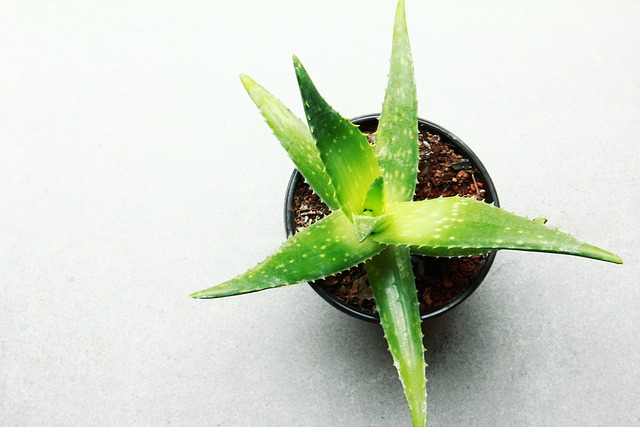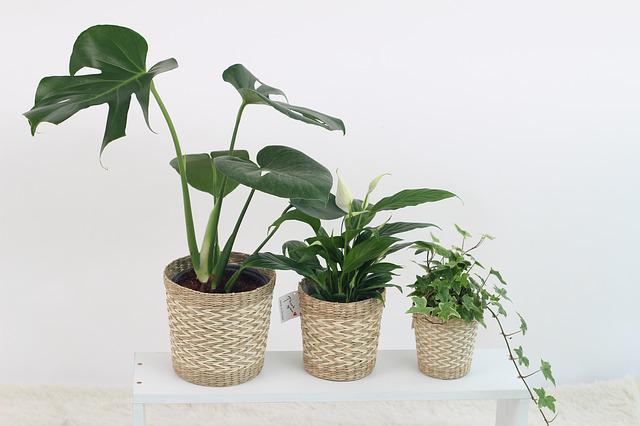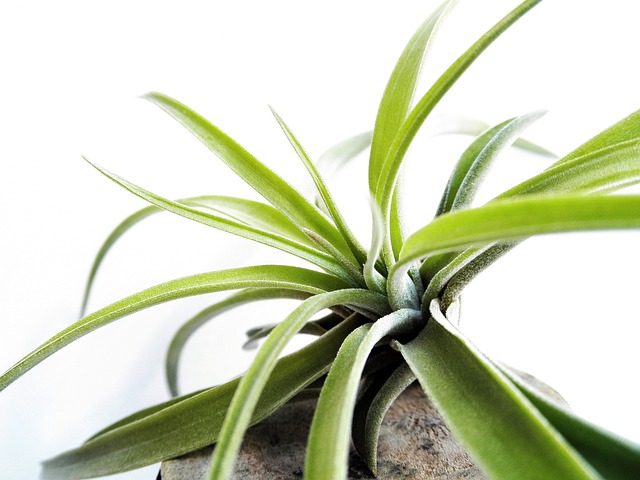The low maintenance requirements of air plants are well known. Despite their reputation as slow growers, they are simple to maintain. Most air plants mature between 2 and 5 years after they first emerge from seeds. The fact that air plants only bloom once in their lifetime makes it more intriguing. The post will tell you about what you want to know about air plant bloom.
Table of Contents
When Air Plants Bloom?
When an air plant blooms are influenced by a variety of factors. The environment that you keep the air plant in, along with the season, variety, and maturity of an air plant, all affect how it blooms.
The level of care it receives also affects when it will bloom. Like most plants, air plants begin to bloom in the spring and summer. As a result of the lengthening days during these seasons, plants are exposed to more light.
Ethylene gas is frequently used in nurseries to induce flowering in air plants. They will even force the air plant to bloom before it is ready because of the allure of a blooming air plant in a store.
The air plants’ blooming time in their natural environment is much longer. Even within the same species of air plants, let alone between different kinds, the blooming period varies. The same species of air plant may take up to 25 years to bloom in a different environment, even though it may do so in 5-7 years in the first.
The key to an air plant’s blooming depends on the conditions and care it receives.
How Often Do Air Plants Bloom?
As was previously mentioned, air plants only bloom once in their lifetime. The duration of the inflorescence or bloom can range from a few days to several months. Some air plants only produce one flower, while others may produce several.
Even if your air plant only blooms once, it will be worth the wait and upkeep. In addition, you can anticipate the development of pups right after it blooms.

The Air Plant Bloom Cycle
To understand the air plant bloom cycle, it is important to learn about the life cycle of an air plant. Only after the plant has reached maturity and is prepared to reproduce does the bloom start. The inflorescence is produced first.
The inflorescence gives way to the full-blooming of a flower. Depending on the type of air plant, the blooming period can last for several days to several months. It takes a lot of energy to bloom, but it’s nature’s way of luring pollinators like bees and birds to air plants.
Insects are attracted by the blossoms’ vibrant colors and occasionally fragrant scents, and they aid in the bloom’s intended function.
Propagation!
Once they have bloomed, the parent air plant then starts to produce pups.
Read about: Hanging Air Plant: The Easiest Ways
What Can I Do To Encourage Blooming?
Increase the amount of light your plant receives.
Bright, filtered light is adored by air plants. What do I mean by filtered? Imagine yourself in the shade of a tree or an umbrella on a bright summer day. Although the light is bright, it is not shining on you.
Direct sunlight for one to three hours in the morning or evening is fine and beneficial for promoting blooming. Nearly all air plants will be destroyed by midday sunlight, when the sun is almost directly overhead, and if any do survive, they will be severely damaged.
It’s difficult for air plants to bloom indoors, but with the right conditions, they can. Find a window with direct morning or evening sunlight that faces south, east, or west. If you are really committed to this bloom, move your plant around your home to take advantage of as much morning and evening light as you can. Moving your plants outside, weather permitting, is the best option. Locate a bright outdoor space with filtered light so you can keep an eye on how much water they are getting. You can bring your plant back inside to enjoy the blooming process once it begins.
You can try a grow light if the outdoors is not an option. Our Aerogarden, where we hydroponically grow herbs, is next to a few tillandsia plants. Onto our tillandsia, some of the LED grow light leaks. The natural light coming in through the room’s windows complements it well.
*Don’t forget to water if you increase the lighting!*
It may even be necessary to water more frequently. More light causes plants to dry out more quickly. We mist our plants thoroughly twice a week. Some species will need more, while others less. As a general rule, the leaves require more water if they are smoother.
Before Air Plant Bloom
Let’s start by reviewing the history of the air plant blooming process. They bloom at the beginning of their reproductive cycle, just like all flowering plants do. Here’s a fun fact for you: air plants only experience one bloom in their lifetime. Depending on the species, they also produce various flower types. The majority of these species produce lovely flowers in a variety of hues, including pink, red, yellow, and purple.

You’ll undoubtedly come across various blooming styles in the world of air plants. For example, when the Capitata peach starts blooming, it’s pale pink in color with the flowers emerging from its center. In the case of the amaranthus and strict, small buds tend to emerge from its center which later become larger and release flowers when they open up. Depending on the species, blooming may last a few days for some or up to a few weeks for others.
Larger air plants like the caput-medusae and the xerographic have a longer cycle when it comes to blooming. The “inflorescence,” which they frequently produce, can surprisingly grow to be a foot tall or even higher for some species. The entire flower tracts are present in the inflorescence, which over time opens up to allow the flowers to emerge. Flower stalks on some air plants can last for more than a year.
After Air Plant Bloom
After your air plants have finished blooming, you may notice “new growth” off the sides, at the base, or find them hidden under leaves that are starting to die off [so be careful when trimming your plants]. These little plants, known as “pups,” will eventually develop into adult air plants and go through the entire growth cycle again.
You can carefully cut off the flower stalk that emerged from the air plant to quicken the offset stage, which will then hasten the growth stage after blooming. Depending on the species, air plants typically produce one to three offsets or pups after blooming. You have the option of cutting off offsets once they are about one-third the size of the adult plant (at which point they would clump together) or leaving them.
What About The Nutrients?
You already know that fertilizing is great for all plants, even though it isn’t necessary because it makes the plants healthier. Fertilizing will be very beneficial if you want to see that bloom. Your air plants won’t begin to bloom until they are strong enough, which consumes a lot of energy. We advise fertilizing twice a month to replace two of the regular waterings. Alternately, you could fertilize a day or two after you would normally water your plants. Make sure your fertilizer is formulated for tillandsia or is diluted accordingly. In the Supplies section of our website, we offer fertilizer for sale.
Care For Blooming Plants
So is there any special care for a Tillandsia in bloom? First, and foremost, keep watering and feeding your plant! However, you’ll need to take extra care when watering blooming air plants to avoid getting the flower wet. As a result, we advise that rather than soaking the entire plant, you should only dunk, mist, or hold under gently flowing water the parts of the air plant that allow you to do so. If the bloom is submerged in water for an excessive amount of time, it may rot or wilt. Since all of a plant’s energy is going into the bloom and eventually the pups, a blooming plant may require a little more water than usual. To ensure that your plant remains content and healthy, make sure to keep an eye on it.
Is There Any Way To Force An Air Plant to Bloom?
It’s something that both expert growers and passionate tillandsia growers frequently do. There are three ways, the first of which may astound you. Put a slice of ripe apple in a plastic bag with your mature, healthy air plant for 48 hours, then take it out. The gas (ethylene) from the apple will “force” the blooming process. The bloom won’t start to appear for 6–14 weeks. The second approach is one that we frequently employ. We mix Florel with water. You can buy floriel online or at the majority of nurseries.

Is My Plant Old Enough?
The most popular air plants take a year to reach maturity. (larger plants in two to three years). It’s likely that the plant you purchased was either mature or on the verge of maturity.
Tillandsia in full bloom are ALL. Don’t doubt it; Nature made them that way, I assure you. Your plant will bloom if you take good care of it by providing the right amount of light, water, and nutrients.
FAQs
Do Air Plants Die After Flowering?
For several weeks to months, air plants are in bloom. Air plants have a short lifespan, just like all other living things. In order to aid in the plant’s ability to draw pollinating insects, nature has created the blooming process. It primes the plant to produce pups, or baby air plants. Even though the air plant’s life cycle may be over after the bloom, the pups that it produces allow the plant to reproduce itself.
How Do You Care for Air Plant Flowers?
Because it concentrates its energy on the bloom and pups during the bloom phase, air plants require more water than usual. When watering the air plant, you must be careful not to wet the flower in order to avoid depleting the plant of its additional energy.
How Long Do Air Plant Flowers Last?
Most air plant flowers fade away after a few days or a week. Large inflorescences can be found in some air plant species, including Tillandsia Xerographica and Tillandsia Harrisii.
Do All Air Plants Bloom?
Sad but true, every air plant will only bloom once in its lifetime. Once the flower has dried up, you should trim off the entire flower stalk, as this will promote “pupping.” Tillandsia “Pups” are simply new plants forming at the base of the plant.
Conclusion
The blooming phase is the first stage of an air plant’s life cycle. It signals the start of the air plant’s reproductive cycle, during which an inflorescence is produced. More than 600 species of Tillandsia produce various types of blooms. Beautiful flowers in a variety of colors are produced by the inflorescences of air plants. Some of them have vivid colors, while others have lighter tones.
Thanks for reading.













